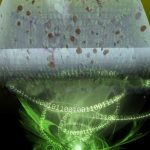 Performing accurate diagnoses in remote locations is incredibly challenging, not least because of an inherent lack of equipment and resources.
Performing accurate diagnoses in remote locations is incredibly challenging, not least because of an inherent lack of equipment and resources.
A new system, developed by a team from UCLA aims to make such remote diagnoses much easier and more effective.
The approach, which was documented in a recently published paper, uses simple optical hardware and a lens-free microscope, together with some smart algorithms to help reconstruct images of tissue samples and thus enable people to conduct biopsies without needing expensive equipment.
Remote tissue biopsies
The tissue biopsy is the gold standard for detecting a range of conditions, including cancer. It is, however, an expensive and complex procedure that requires the kind of facilities that are out of reach of many in remote regions.
Usually, tissue is cut into incredibly thin slices before being stained with dyes to allow medical professionals to examine the tissue under a microscope for abnormalities and diseased cells. It does, however, prevent multiple samples being analyzed at once.
“Although technological advances have allowed physicians to remotely access medical data to perform diagnoses, there is still an urgent need for a reliable, inexpensive means for disease imaging and identification—particularly in low-resource settings—for pathology, biomedical research and related applications,” the researchers say.
The really interesting part (for me at least), is the machine they use to perform the tests. Rather than a traditional microscope, which can go for as much as $50,000, the team developed a holographic lens-free microscope that can produce 3D pictures with around 1/10 of the image data that traditional microscopes need. What’s more, it costs just a few hundred dollars to make.
Ease of use
What’s more, the system can also perform biopsies effectively with samples that are over 20 times thicker than traditional samples. That’s crucial as producing such thin samples is incredibly hard without the sophisticated equipment designed for such a task. It also allows scientists to study a larger volume of samples, which in turn means that abnormalities emerge faster than would otherwise be the case.
“Through computation and algorithms, we converted a standard 10-megapixel imager, like those commonly used in mobile phones, into a few-hundred-megapixel microscope that can digitally image through different slices of a thick tissue sample,” the team say.